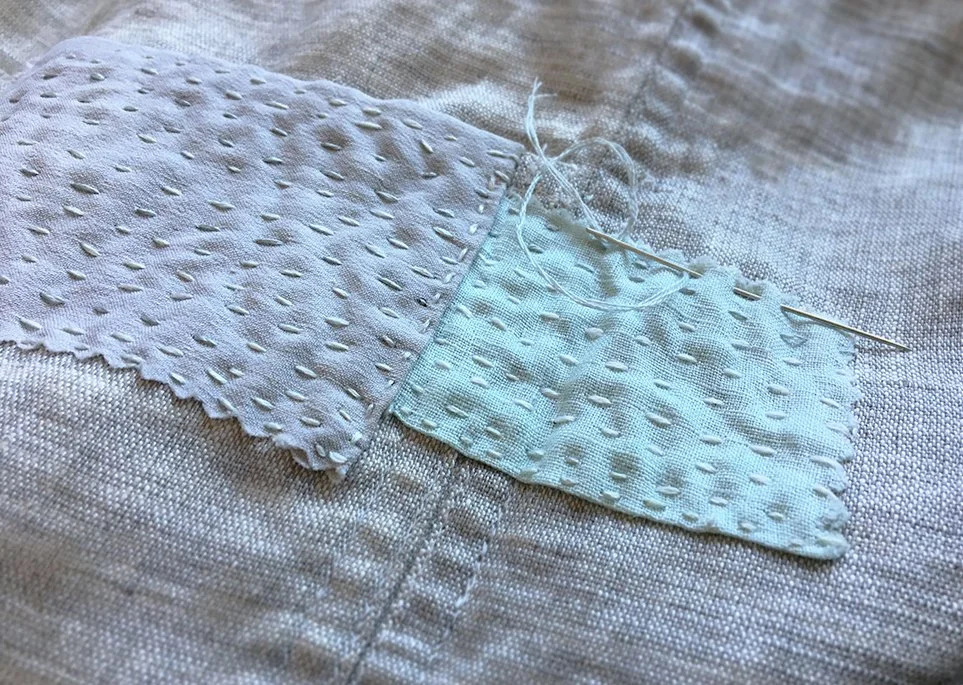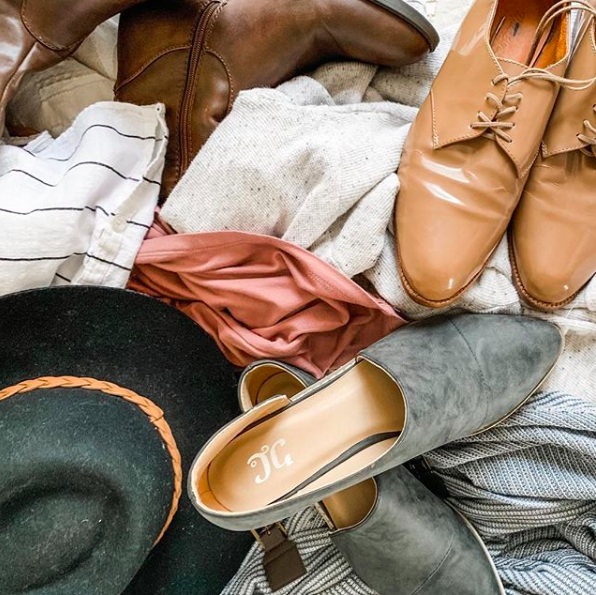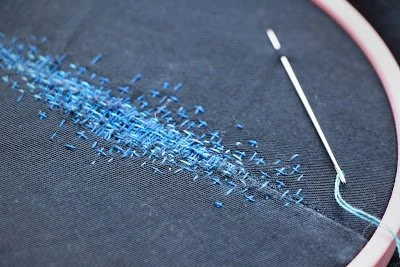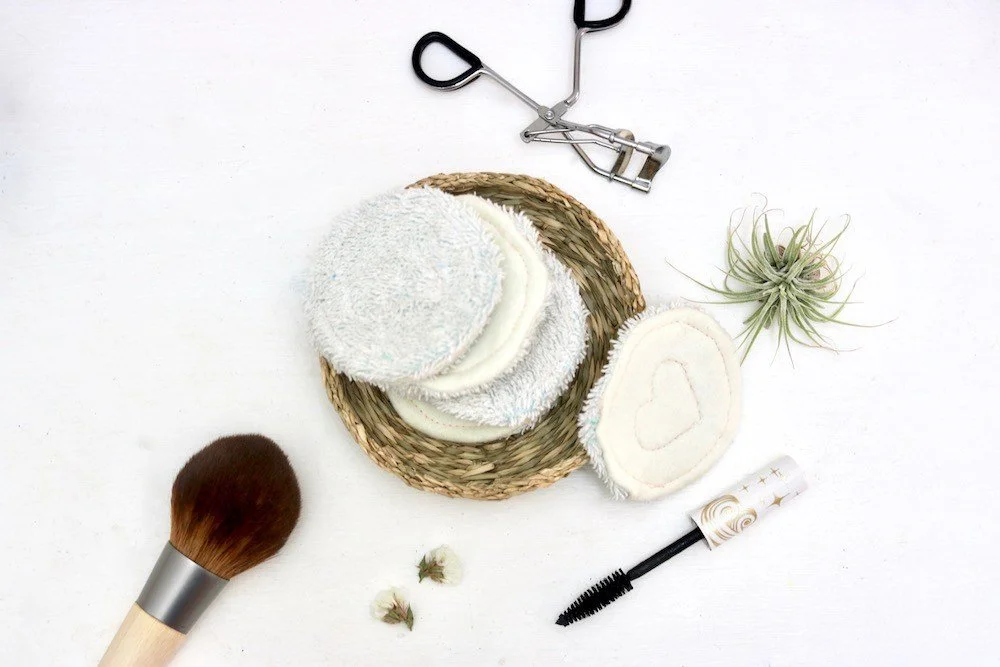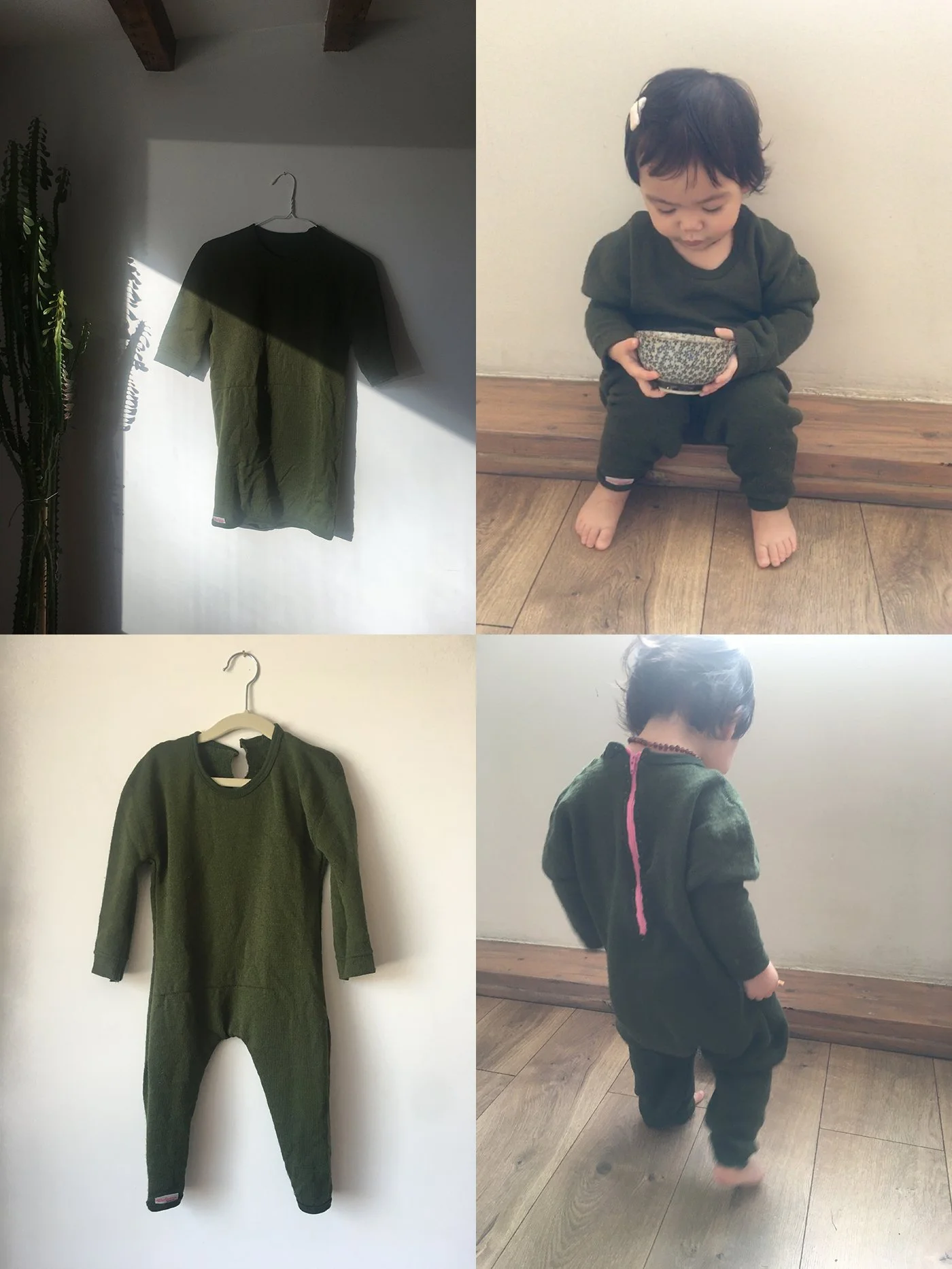Originally written and published for Ethel Studio on March 19, 2019
With the average American throwing away 80 pounds of clothing a year, adding up to millions of tons of fabric entering landfills each year, we’ve got a whole lot of room for improvement. Luckily there are simple steps we can take to reduce our textile waste at home with our clothing, bed linens, and any other textile material. These ideas just barely scratch the surface of the endless world of possibilities!
1. Mend
“Mending is mending a scar. If we are proud of our life, proud of our scar, then mending is the physicalization of that.”
— Orsola De Castro
Don’t let small holes or missing buttons make you give up hope on a garment. I feel like most of my sweaters have had a hole in them at this point — knits are just so vulnerable! But thanks to a needle and thread, small holes can be mended up before they grow into big holes. For larger holes, you might need to use a darning technique to properly fill them in. Sewing a patch over a hole is another option which can create more stability and can also create a new look for your garment depending on the fabric you use for your patch. An interior patch, like in the photo above, is another more subtle option to create stability around the area of the rip in the fabric.
Also, a shameless plug for my Mindful Mending course at Tare Market in Minneapolis next month! We will cover several decorative and invisible mending techniques, darning, and embroidery while focusing on mindfully extending the life of our clothes.
2. Alter
Still have that dress in the back of your closet that just never fit quite right? Or that pair of jeans that are way too long? Instead of just getting rid of them or buying new, why not head to your local tailor for an alteration instead? If you have the skills yourself to alter clothing, even better! This can help breathe new life into your pieces that aren’t quite working in the fit category. Tailors can also replace zippers that are no longer working. Taking shoes to our local shoe repair place to fix worn down heels or other problems is another important step to extending the life of our shoes as well.
3. Swap
Photo: Katelyn Lloyd
What better way to connect with friends or make new ones but in a clothing swap? True gems can be found while you find a new home for clothing you’re tired of. Swaps are becoming more and more popular. I was a bit skeptical about swapping at first, but once I went to my first, I became a believer! Look for swap meet ups in your area, or host one of your own with these swap-hosting tips.
4. Redesign
For those of you up for a challenge and have some sewing or design experience in your belt, redesigning your clothes into new clothes can be a way to revamp them and experience the endorphins that come with accomplishment of finishing a project or buying something new! It could be as simple as shortening the hem of a dress to make a top, to something more complicated like making a skirt from a button-up shirt. Here’s another set of redesign examples to get your creative juices flowing.
5. Overdye
Photo: Sophia N. Ahmad in the studio of Maria Elena Pombo’s Fragmentario
Somehow my white shirts never stay white. They are magnets for the most permanent of stains. Luckily there are a million ways to overdye your garments if they are of natural fibers, viscose, or tencel. (Polyester and nylon can’t be dyed easily at home, so I wouldn’t even go there.) Solid dye, dip dye, splatter dye, there are so many ways to disguise the pesky stain. Try experimenting with some natural dyes from food waste like onion skins, avocado pits and peels, turmeric, hibiscus flower, or tea. Or you want to dive deep into the vast world of natural dyes, I suggest the Botanical Colors website as a great place to start on your journey.
6. Embroider
Photo: Jenny Dix
To cover up stains or repair a rip or tear can artfully be done with decorative stitching. From simple straight stitching to more complicated artwork, the possibilities are endless with a needle and thread.
Read more: DMC covers the basics // Sashiko Embroidery, a Japanese artform
7. Make Rags + more
Photo: Elana Bloom
Clothing and bed linens or towels that are torn or stained are great candidates to be cut up into rags and used around the house as reusable cleaning cloths. Old towels can be cut up into smaller rags or sewn into something new such as these genius makeup removing pads.
And for those tired curtains, there’s always the Von Trapp family for inspiration….
8. Go Intergenerational
Photo: Taryn Urushido
Back in the day it was commonplace to make kids clothes from adult clothes. Now might be the perfect time to bring this back. Check out the cutest jumper my friend, artist Taryn Urushido, made for her daughter from her old wool thermal top. She sewed up the garment shape she needed and then inserted a zipper in the back so little Azusa could get in and out. Too cute!
9. Donate
Sometimes it’s just time to say goodbye to something that you can’t mend, alter, fix, swap, redesign, or overdye. In this case, donating clothes, bags, shoes, and accessories to your local donation place is a great option. Do some research online to find a local donation location that is in alignment with your values.
These options just brush the surface of possibilities in reducing your textile waste footprint at home. The important thing is to build an awareness of what you’re bringing in and out of your home and how you are caring for the textiles that you use and love. Throwing textiles in the trash (headed for a landfill or incinerator) should be the very last resort!
